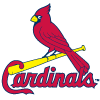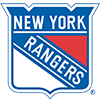Even if you've never played in a DFS MLB contest, or are a relative novice, you're likely familiar with the fact that certain stadiums have gained reputations as "hitters'" or "pitchers'" parks. These labels are largely backed up by a horde of data that validates it as either a fertile environment for offensive production, or a black hole where fly balls go to die.
Naturally, given the offensive or defensive conditions that certain stadiums appear to foster, knowing the traits of each park can be particularly valuable information when setting your daily fantasy baseball lineup. The name of the game in any fantasy format is obviously points, and having a good read on what a stadium may or may not yield on any given night is an essential component in daily fantasy baseball research.
Quantifying Park Factor
Hitters' parks are often the sites of the highest expected run totals on a given slate, while the inverse can often be true for pitching-favorable stadiums. But how exactly is a park factor quantified?
The overriding problem when analyzing park factor data is that there are a variety of different systems employed by different sites to measure this variable. Since it would be impractical to try and examine each of the multiple formulas in use, we'll settle on ESPN Park Factor data for the sake of clarity and consistency.
ESPN utilizes a formula for park factor that breaks down as follows:
PF: ((homeRS + homeRA)/(homeG)) / ((roadRS + roadRA)/(roadG))
Essentially, they compare the average number of runs scored and allowed per game at a stadium versus those same averages by that team on the road. Any figure generated from this equation that is greater than 1.00 is considered favorable to hitters, while anything under that mark renders the park advantageous to pitchers.
Not All Hitters' Parks Are Created Equal
Following the link provided earlier will give you a look at how all stadiums are ranking this season in terms of park factor. However, not all hitters' parks necessarily yield the same type of contact. As with other metrics that we've already discussed, looking at the numbers with somewhat of a nuanced eye can pay off when conducting daily fantasy baseball research.
For example, Coors Field is unsurprisingly the most generous for offense, with a park factor of 1.611. The thin air in Colorado has helped the flight of the ball since the stadium opened, but it would be incorrect to assume that this automatically equates to it being the most home-run friendly stadium in the majors as well.
Rather, that distinction goes to Yankee Stadium, where the highest home run probability (2.035 to be exact) exists. Make no mistake, plenty of medium-to-hard contact is still being made by the Rockies and their visitors, as Coors Field leads the league in singles and doubles per game. Interestingly, pitchers also seem to lose their control there, as the stadium is the site of the most walks issued per game (1.451).
On the opposite end of the spectrum is Dodger Stadium in Los Angeles, which sports a park factor of 0.596. There's been a fair share of homers hit there—with the stadium ranking 18th in that category with a 0.926 figure—but other types of hits are generally lacking compared to other parks.
There's all sorts of examples in between, and sometimes, particularly in the earlier parts of a season, you may encounter a few statistical anomalies. For example, triples are much less common than singles, doubles or homers, yet Minute Maid Park in Houston was sporting a 4.800 figure in the category that was over a full point higher than any other stadium in the league. There are also physical stadium configurations that lend themselves to certain types of hits as well, such as the Green Monster in Fenway Park often turning would-be doubles into long singles, and its trapezoidal maze in left-center sometimes helping doubles extend into triples.
In general, the takeaway is that becoming aware what type of contact tends to be made most frequently at certain parks can help when trying to optimize a daily fantasy baseball lineup.
Making Lineup Decisions Based on Park Factor
Now that we know where to find the data, the key is to use it intelligently. This can range from the painfully obvious, such as usually avoiding starting pitchers in Coors Field, Globe Life Park or Chase Field (the stadiums with the three highest park factors), to more under-the-radar trends.
In one of our earliest DFS Baseball 101 installments, I alluded to how knowing your pitchers helps you select your hitters when setting your daily fantasy baseball lineups. This certainly holds true when incorporating park factor into the equation. For example, taking a slugger who's facing a long ball-prone pitcher in a stadium with an elevated home run rate can certainly increase your chances for a handsome return. Likewise, tabbing a hitter who sprays the ball around with regularity and amasses plenty of singles and doubles—in other words, a high-average, medium-power player like the Nationals' Daniel Murphy, the Red Sox's Travis Shaw or the Pirates' Starling Marte—might be a particularly wise move in a park with dimensions that tend to elicit a considerable amount of extra-base hits.
Conversely, you can use a stadium's profile to help you hone in on one of the most crucial portions of your daily fantasy baseball lineup: your pitcher. For example, a pitcher who tends to keep the ball on the ground is naturally a safer fit for a game being played in a stadium that skews toward home runs. On the other hand, sometimes pitchers who may have trouble with the long ball can be given much stronger consideration in games being played at PNC Park (league-low 0.528 home run rate) or AT&T Park (second-lowest rate of 0.561), especially if there are other favorable aspects.
Handedness Plays A Role Too
Before we conclude our look at park factor, we have to consider handedness, which certainly plays a part when utilizing this metric to make daily fantasy baseball lineup decisions. In past installments, we'd touched on the importance of looking at "splits"—how a hitter or pitcher does against each handedness of the opposition—and these should certainly be incorporated when analyzing park factor as well.
Park factors can be fully broken down by handedness of pitcher and hitter, so that you can hone in on what each stadium tends to yield to each. This type of information further enhances your ability to make informed—and hopefully profitable—choices for your daily fantasy baseball lineups, as you can go beyond just blindly trying to stack players simply because of the location of their game.
There can be some marked differences in the success rates of left-handed and right-handed hitters, even in what are known as prominent hitters' parks. For example, Rogers Centre in Toronto ranks favorably overall for offense, as it boasts a top-3 park factor. However, you'd likely want to know that over the 2014 and 2015 seasons, right-handed hitters carried a 4.40 percent home run rate at the stadium, while their left-handed counterparts sported a considerably lower 2.70 percent.
This is but one example of how drilling down further into handedness data from a park factor context can give you valuable insight into making selections for your daily fantasy baseball lineup. It stands to reason that these types of splits would occur, even in parks that generally favor offense overall, considering that specific dimensions within stadiums can play a particularly important role in yielding certain types of production.
To further illustrate, the short right-field porch in Yankee Stadium favors left-handed hitters, while the aforementioned Green Monster in Fenway makes for a great target for right-handed bats with some pop. Conversely, cavernous configurations can make life particularly hard on certain hitters, and due to the extra breathing room they provide, significantly easier on pitchers facing them.








































